-
 Bitcoin
Bitcoin $114400
1.32% -
 Ethereum
Ethereum $3499
2.20% -
 XRP
XRP $2.922
4.26% -
 Tether USDt
Tether USDt $0.0000
0.03% -
 BNB
BNB $752.6
1.53% -
 Solana
Solana $161.8
1.64% -
 USDC
USDC $0.9999
0.01% -
 TRON
TRON $0.3267
1.32% -
 Dogecoin
Dogecoin $0.1991
3.02% -
 Cardano
Cardano $0.7251
3.29% -
 Hyperliquid
Hyperliquid $38.32
3.36% -
 Stellar
Stellar $0.3972
7.58% -
 Sui
Sui $3.437
2.74% -
 Chainlink
Chainlink $16.29
3.65% -
 Bitcoin Cash
Bitcoin Cash $545.3
3.70% -
 Hedera
Hedera $0.2482
7.49% -
 Ethena USDe
Ethena USDe $1.001
0.03% -
 Avalanche
Avalanche $21.40
2.02% -
 Toncoin
Toncoin $3.579
1.56% -
 Litecoin
Litecoin $109.3
2.20% -
 UNUS SED LEO
UNUS SED LEO $8.951
-0.18% -
 Shiba Inu
Shiba Inu $0.00001220
2.75% -
 Polkadot
Polkadot $3.613
2.99% -
 Uniswap
Uniswap $9.173
3.78% -
 Monero
Monero $302.6
2.62% -
 Dai
Dai $0.0000
0.00% -
 Bitget Token
Bitget Token $4.320
1.52% -
 Pepe
Pepe $0.00001048
3.40% -
 Cronos
Cronos $0.1314
4.33% -
 Aave
Aave $259.4
3.54%
How are rewards distributed in DeFi mining?
DeFi mining rewards vary widely, depending on factors like staked assets, protocol performance, and lock-up periods; understanding the specific distribution mechanism and inherent risks (impermanent loss, smart contract vulnerabilities) is crucial before participation.
Mar 25, 2025 at 05:43 pm
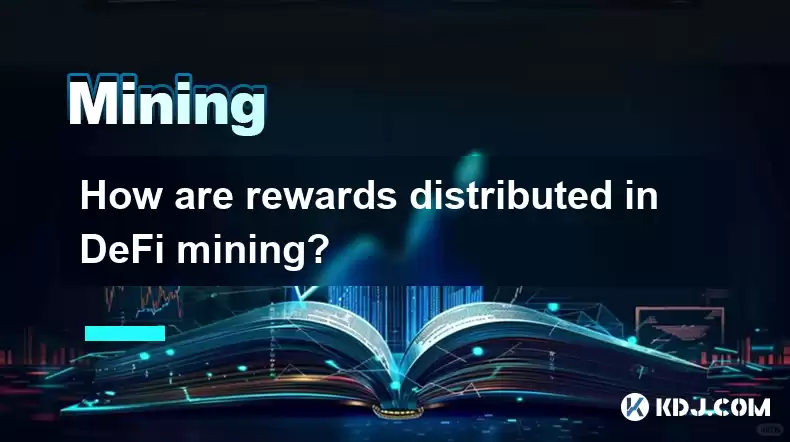
Key Points:
- DeFi mining rewards are distributed differently depending on the specific protocol and its tokenomics.
- Common distribution methods include proportional allocation based on staked assets, block rewards for validators, and liquidity provision rewards.
- The amount of rewards received depends on factors such as the total staked amount, the amount of time assets are locked, and the protocol's overall performance.
- Understanding the specific reward distribution mechanism is crucial before participating in DeFi mining.
- Risks involved in DeFi mining include impermanent loss, smart contract vulnerabilities, and rug pulls.
How are Rewards Distributed in DeFi Mining?
DeFi mining, unlike traditional Bitcoin mining, doesn't involve solving complex cryptographic puzzles. Instead, it involves contributing resources to a decentralized finance (DeFi) protocol in exchange for rewards, typically in the form of the protocol's native token or other cryptocurrencies. The distribution methods are varied and depend heavily on the specific protocol's design.
Common Reward Distribution Mechanisms:
- Staking Rewards: Many DeFi protocols reward users for staking their tokens. This involves locking up tokens within the protocol to secure the network and participate in governance. Rewards are often distributed proportionally to the amount staked, meaning those who stake more receive a larger share of the rewards. The reward distribution is often calculated on a per-block or per-epoch basis.
- Liquidity Provision Rewards: Protocols using automated market makers (AMMs) often reward users who provide liquidity to trading pools. These users earn fees generated from trades executed within the pool, along with potential additional rewards from the protocol itself. The distribution is often proportional to the liquidity provided.
- Yield Farming Rewards: Yield farming involves lending or staking crypto assets across multiple DeFi protocols to maximize returns. Rewards are typically distributed in the form of the platform's native token, or sometimes in a combination of tokens. The distribution varies greatly between platforms.
- Block Rewards: Some DeFi protocols utilize a Proof-of-Stake (PoS) consensus mechanism, rewarding validators who participate in validating transactions and adding new blocks to the blockchain. The rewards are distributed proportionally to the amount of staked tokens.
- Governance Rewards: Participation in governance activities, such as voting on proposals, can also earn rewards in some DeFi protocols. These rewards incentivize community participation in the protocol's development and direction.
Factors Affecting Reward Distribution:
The amount of rewards a user receives isn't solely determined by the amount of assets staked or liquidity provided. Several other factors play a crucial role:
- Total Staked Amount: The larger the total amount of assets staked in a protocol, the smaller the individual reward per unit staked will be.
- Lock-up Period: Some protocols offer higher rewards for locking up assets for longer periods. This incentivizes long-term commitment to the protocol.
- Protocol Performance: The overall performance of the protocol, including trading volume and network activity, can significantly impact the rewards generated.
Risks Involved in DeFi Mining:
DeFi mining, while potentially lucrative, carries several inherent risks:
- Impermanent Loss: This is a risk associated with liquidity provision. If the price ratio of the assets in a trading pool changes significantly, a user might experience a loss compared to simply holding the assets.
- Smart Contract Vulnerabilities: DeFi protocols are built on smart contracts, which are susceptible to vulnerabilities. Exploits could result in the loss of user funds.
- Rug Pulls: Malicious developers can create a DeFi protocol, attract users, and then drain the funds. This is a significant risk, especially with lesser-known protocols.
- Market Volatility: The value of the rewards received can fluctuate significantly depending on the market price of the underlying cryptocurrencies.
Common Questions and Answers:
Q: What is the difference between DeFi mining and traditional Bitcoin mining?
A: Traditional Bitcoin mining involves solving complex cryptographic puzzles to validate transactions and earn Bitcoin. DeFi mining involves contributing resources to a DeFi protocol, such as staking or providing liquidity, to earn rewards in the form of crypto tokens.
Q: Are DeFi mining rewards taxable?
A: Yes, in most jurisdictions, DeFi mining rewards are considered taxable income. The specific tax implications depend on your location and the applicable tax laws. Consult a tax professional for advice.
Q: How do I choose a reputable DeFi mining protocol?
A: Research thoroughly. Look for protocols with transparent tokenomics, audited smart contracts, a strong community, and a proven track record. Be wary of projects with unrealistic promises or a lack of transparency.
Q: What are the best DeFi mining strategies?
A: There's no one-size-fits-all "best" strategy. The optimal approach depends on your risk tolerance, investment goals, and understanding of different DeFi protocols. Diversification across multiple protocols is often recommended.
Q: How can I protect myself from DeFi mining risks?
A: Conduct thorough due diligence before participating in any DeFi protocol. Only invest what you can afford to lose. Use secure wallets and follow best practices for protecting your private keys. Stay informed about the latest security vulnerabilities and market trends.
Q: What are the long-term prospects of DeFi mining?
A: The long-term prospects of DeFi mining are uncertain, as the DeFi landscape is constantly evolving. The profitability and viability of DeFi mining strategies depend on various factors, including technological advancements, regulatory changes, and market dynamics.
Disclaimer:info@kdj.com
The information provided is not trading advice. kdj.com does not assume any responsibility for any investments made based on the information provided in this article. Cryptocurrencies are highly volatile and it is highly recommended that you invest with caution after thorough research!
If you believe that the content used on this website infringes your copyright, please contact us immediately (info@kdj.com) and we will delete it promptly.
- Cold Wallet vs. MetaMask: A Web3 Wallet Revolution?
- 2025-08-04 06:30:12
- Chainlink Price Prediction: Bearish Continuation or a Bullish Reversal?
- 2025-08-04 06:35:12
- Bitcoin Whale Alert: Navigating Liquidation Risks in a Volatile Market
- 2025-08-04 07:10:12
- BNB Price Under Pressure: Navigating the Bearish Trend and Market Sentiment
- 2025-08-04 07:15:12
- Bitcoin Price Wobbles: Options Analysis Points to Bullish Undercurrent Despite Dip
- 2025-08-04 04:30:12
- Ark Invest, Coinbase, and Bitcoin: Decoding the Crypto Investment Landscape in NYC
- 2025-08-04 04:30:12
Related knowledge
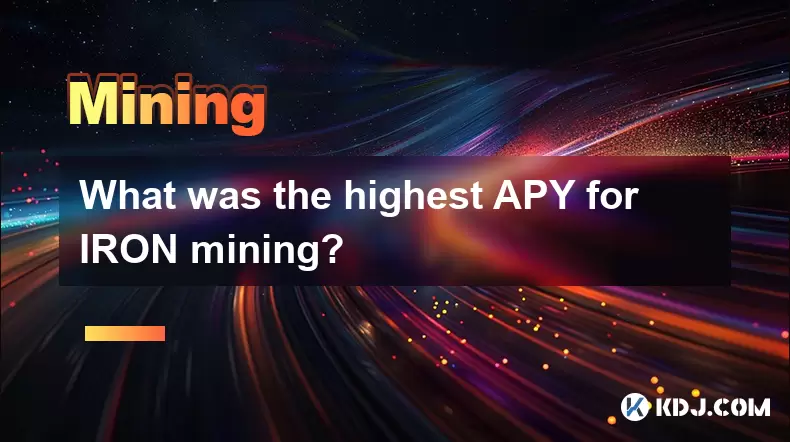
What was the highest APY for IRON mining?
Jul 23,2025 at 05:14am
Understanding IRON Token and Its Mining MechanismThe IRON token is a stablecoin that operates within the Iron Finance ecosystem, primarily on blockcha...

What is impermanent loss in IRON pools?
Jul 23,2025 at 09:00am
Understanding Impermanent Loss in the Context of IRON PoolsImpermanent loss is a phenomenon that affects liquidity providers in decentralized finance ...
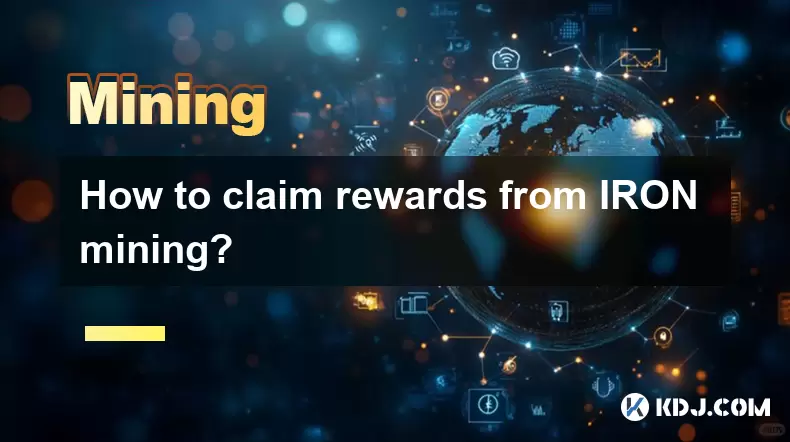
How to claim rewards from IRON mining?
Jul 23,2025 at 02:21pm
Understanding IRON Mining and Reward MechanismsIRON Finance operated as a decentralized finance (DeFi) protocol on the Polygon and Binance Smart Chain...
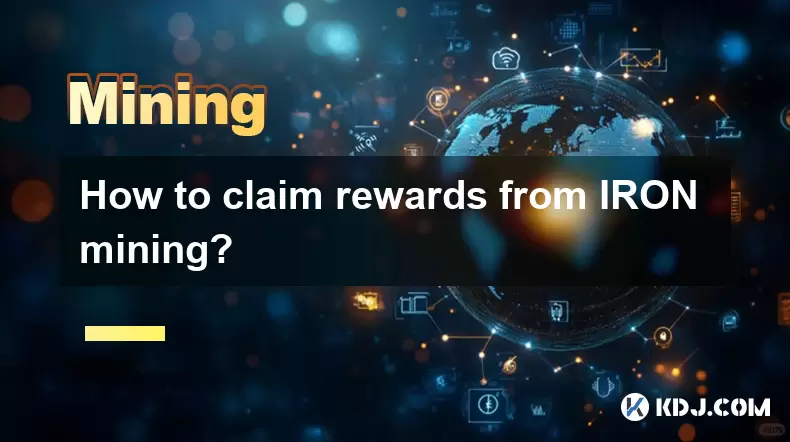
How to claim rewards from IRON mining?
Jul 29,2025 at 05:07am
Understanding IRON Mining and Reward MechanismIRON is a dual-token system designed to stabilize the value of a synthetic asset through a combination o...

IRON mining tutorial for beginners
Jul 27,2025 at 12:01am
What Is IRON and How Does It Work in the Cryptocurrency Ecosystem?IRON is a cryptocurrency token that operates on the Binance Smart Chain (BSC) and is...
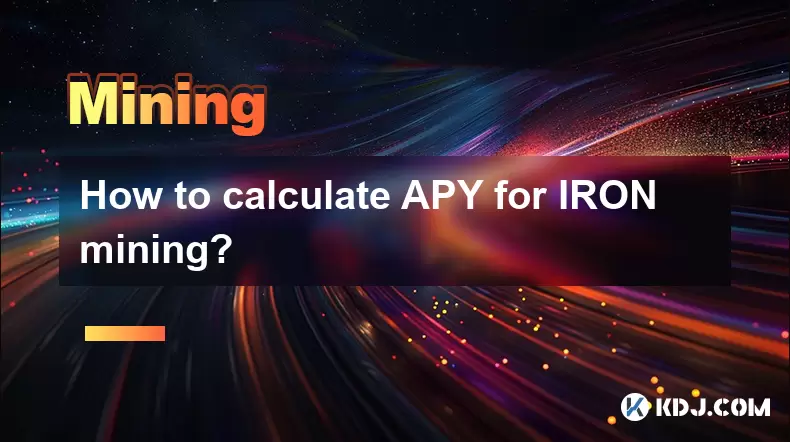
How to calculate APY for IRON mining?
Jul 28,2025 at 09:49am
Understanding APY in the Context of IRON Token MiningWhen engaging in IRON token mining within decentralized finance (DeFi) platforms, Annual Percenta...

What was the highest APY for IRON mining?
Jul 23,2025 at 05:14am
Understanding IRON Token and Its Mining MechanismThe IRON token is a stablecoin that operates within the Iron Finance ecosystem, primarily on blockcha...

What is impermanent loss in IRON pools?
Jul 23,2025 at 09:00am
Understanding Impermanent Loss in the Context of IRON PoolsImpermanent loss is a phenomenon that affects liquidity providers in decentralized finance ...

How to claim rewards from IRON mining?
Jul 23,2025 at 02:21pm
Understanding IRON Mining and Reward MechanismsIRON Finance operated as a decentralized finance (DeFi) protocol on the Polygon and Binance Smart Chain...

How to claim rewards from IRON mining?
Jul 29,2025 at 05:07am
Understanding IRON Mining and Reward MechanismIRON is a dual-token system designed to stabilize the value of a synthetic asset through a combination o...

IRON mining tutorial for beginners
Jul 27,2025 at 12:01am
What Is IRON and How Does It Work in the Cryptocurrency Ecosystem?IRON is a cryptocurrency token that operates on the Binance Smart Chain (BSC) and is...

How to calculate APY for IRON mining?
Jul 28,2025 at 09:49am
Understanding APY in the Context of IRON Token MiningWhen engaging in IRON token mining within decentralized finance (DeFi) platforms, Annual Percenta...
See all articles

























































































